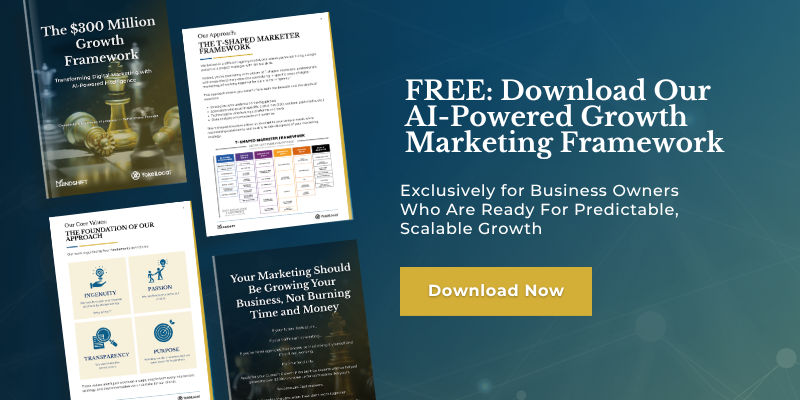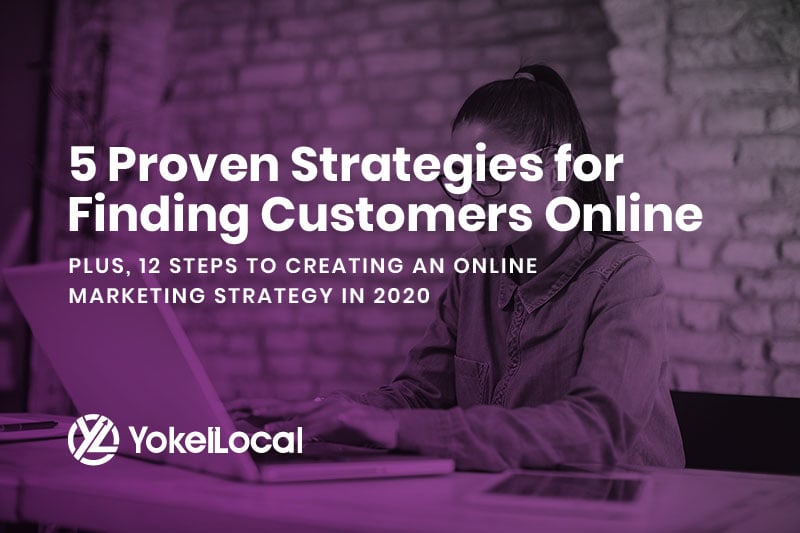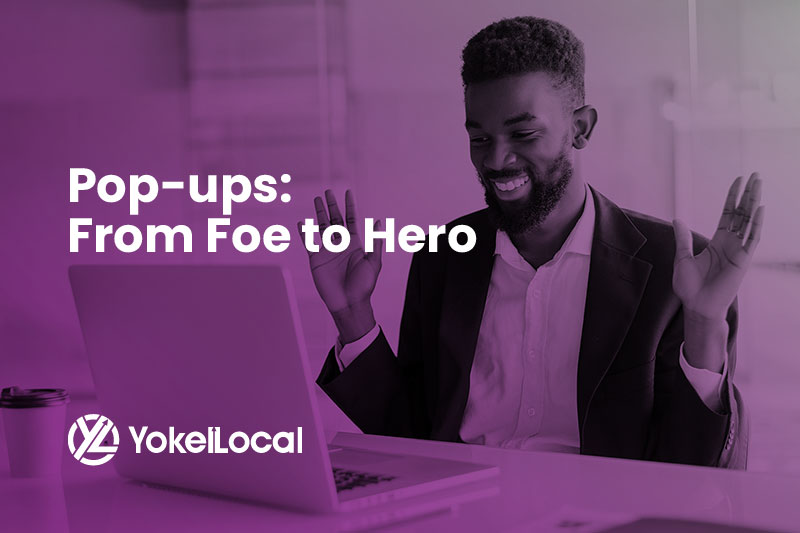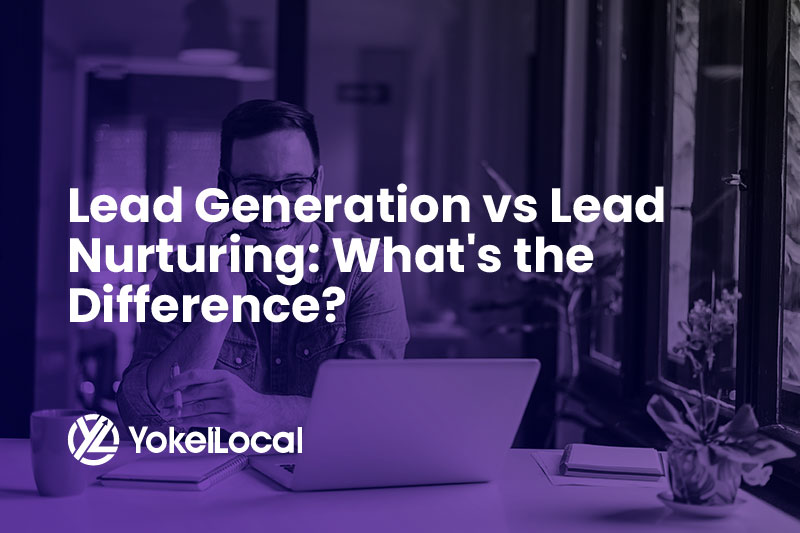Are you having trouble attracting and converting leads through your blog posts?
In this episode of #AskYokelLocal, we answer the question, "What's the #1 corporate blog lead generation strategy?"
Video Summary
Generating leads is often a common problem among business owners. If you're in the same boat, follow these guidelines:
- Remember the lead conversion methodology. Make it easy for someone to go from a blog post to converting and becoming a lead on your website. If you have a blog visitor who doesn’t convert right away, don't fret. They may come back as direct traffic. The returning visitor is likely going to convert faster.
- Use your strengths to create remarkable content. The way to create a blog post isn’t solely based on writing. Take advantage of your strengths (mine are shooting videos and presenting). One example of remarkable content is a CTA (call-to-action). This is the key to conversion.
- Utilize the buyer's journey. It’s simple: take what’s happening the real world (customers' pains, ideas, and thoughts), and add those to your blog. They are having trouble growing their business. Provide a solution for them. Your blog content is meant to be built around your buyers’ concerns.
Want more information about how these strategies fit into our 6-step framework? Click here to download your copy of 1-page inbound gameplan.
If you have a marketing-related concern that has been on your mind lately, subscribe to our blog and #AskYokelLocal.
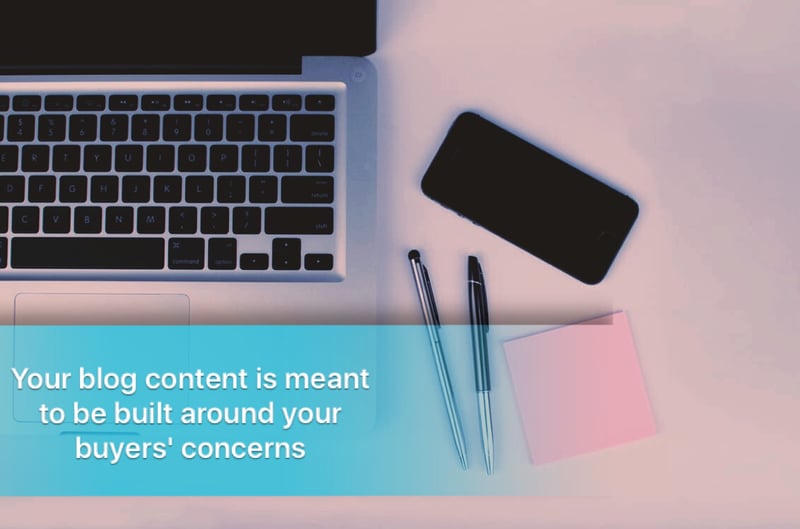
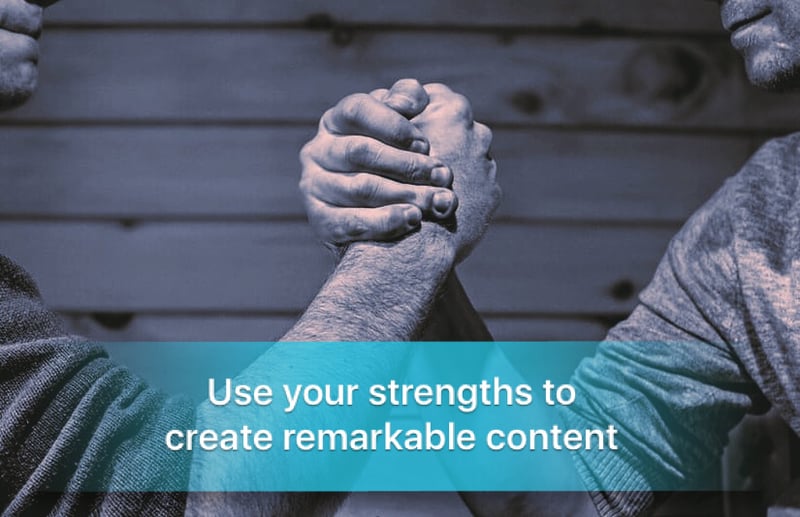
Transcript
If you have ever doubted the power of blogging on your website, to attract and convert high-quality leads, then this video tutorial is specifically for you. Hi, my name is Darrell Evans. I’m one of the co-founders of Yokel Local internet marketing. In this example that I’m going to give you today is from our website, literally an hour ago.
What I’m going to show you is a blog post that I wrote in excess of two-and-a-half years ago and the exact thought process that went through my mind when I created it, that just attracted an international cosmetic line to our company.
So, sit tight, and get your pen ready because I’m going to give you some takeaways that you need to think about.
First of all, let me just tell you that our system, the methodology we teach is 6 steps. And as you can see on the screen, we talk about a playbook that turns website visitors into sales. Well, let me just quickly share with you—I’m not going to go through the entire 6 steps with you on this video—but the most important steps I’m going to talk about are the first three steps.
Number one: our ability to understand our buyer persona, and more specifically, understand their pain.
Number two: we used that to create a piece of content that would get found online when our ideal customer was looking for that pain or trying to solve that pain.
And then number three: we attracted them to our website and did the thing necessary to convert them. So I’m going to stop there. We have 6 steps to our entire system, but let’s go into the example.
Number one, I’m going to take you into our CRM and I’m going to scroll down and let you know—I’m going to give you some real world information and data right from our system. This happens real world, this happens all day for us, but I just want to show you this live one because it just came in.
So this gentleman contacted us, it says, through direct traffic. Now, that’s not quite the way it happened because it looks like he went through this blog post.
So this blog post was titled, “How to Beat Google PPC Click Fraud.” So, Google PPC, Google AdWords, pay per click, the topic of this pane is click fraud.
So just quickly let me explain what click fraud is.
Click fraud is simply when advertisers believe that competitors are clicking on their ads, or they believe that multiple people are clicking on their ads, and they’re getting charged by Google. So there is a mindset behind that.
So after he read this blog post, and I’m going to show you the blog post and other things on it. He went over to our free consultation page but he didn’t convert. We talk all the time about visitors not necessarily converting in the exact moment they arrived on your website.
So at 12:39 in the morning, midnight—I was asleep; I was getting really good sleep at that time, I can assure you—he’s on our website. He visits this blog post, he doesn’t convert right away. He then comes back as direct traffic, and we say this all the time, that the returning visitor is, generally speaking, going to convert faster. So we attracted him with this blog post—I’m going to show you where he went and how he got there—then he comes back and he goes to our consultation page. He then goes back to the blog post. He’s not sure yet that he wants to meet with us yet. He then goes back to the consultation page, or maybe he went back to the actual Click Fraud page, then he clicked on what we call our CTA, and I’m going to show you what that means in a second.
So here’s the methodology: you have to make it easy for someone to go from a blog post to converting and becoming a lead on your website. I’ll show you this in application on the actual site in just a second.
So he clicks on the CTA and that means call-to-action, to go over to our consultation page. Mind you, he had already been on our consultation page once or twice, but he’s still in the loop of not being sure if he wants to convert or not, or speak with us or not. And I get it. He probably figures he’s going to get in a high-pressure sales call. Well, that’s not how we work. And he probably watched the video on that page, which now, he knows. He also went back and reviewed one of our case study pages, so he’s taking himself through the methodology. All of this happened in a very short period of time. So between 12:39, his first time arriving on our site, all the way until 6:09, is when he actually converted. So he submitted the form at 6:09 this morning. Now, I’m not going to open up all his details. If you were paying attention, you probably saw some on the left-hand side, and he became a lead to our system. So let’s go talk about where he was.
Where did he come into existence to our website? He came in on this blog post called, “How To Beat Google PPC Click Fraud.”
Interestingly enough, all I did in this particular video—and we talk about this all the time, for you business owners and companies, marketing managers out there—the way to create a blog post isn’t necessarily just writing. I will assure you that I’m not the best writer in the world. In fact, it hurts me to write. So I use my strength.
My strength is shooting videos, and explaining, and presenting. So what did I do? I shot a screen capture video so bad that I didn’t even put my face on it. It’s just a screen capture. Look, if you look at my timeline, I put one phrase on the screen and took a screen capture. And if you go out to Google—I just want to prove how long ago I wrote this article, or I published this video—November 26th, 2014. So just over 2 years. I’m recording this video December 22nd, 2016.
The reason it probably didn’t do very well, if you look at the negative comments over here, the reason there is negative comments probably is because I didn’t put my face on the video. I got 4 negative/dislikes. But guess what, I know I wasn’t interested in glamour, I wasn’t interested in high video editing quality—I was interested in content. So what did I say to anyone who arrives on this video? I said imagine in a world, a Google AdWords advertising where every dollar you invested returned—you got a campaign return on that dollar. Can you envision it? Now wake up because you and I know it doesn’t exist.
So I just use a little humor and I’m trying to debunk this idea that you’re getting frauded every time you make an advertising campaign on Google. Now, if you don’t do it right, you will lose money, but it isn’t necessarily fraud.
Google has grown their advertising revenue to some un-Godly amount of money, maybe 70-something billion, if what I remember hearing properly, in the last year, just in the last 2015 coming into 2016. They can’t do that if they’re just frauding advertisers. So this is a sort of debunking of a myth sort of video.
But here’s my point, scroll down, all we really did was we took the video transcription—notice, I didn’t write this out—we had an editor just kind of clean it up and make it readable, but this is really just a video transcription of my conversation about that topic. And here’s the CTA. This is nothing fancy; anyone can do this, every website can do this. So here’s the offer at the end of the video.
Basically, I concluded the video, “Hope you’re having a great day,” and then, I didn’t say this in the video—I just added this in the blog post, “Do you need help?” It’s a simple call to action. Need help? Then speak with us. It’s very reasonable if this person, or any person, believes that what I said in the video was true—and maybe they were thinking the thoughts that I debunked in the video—guess what, it’s a simple call to action with a simple click through action, and I also gave them some additional resources. Now, of course, if they click this, they are going to slide over to our free consultation page, which is exactly where he went.
And, of course, I’ve got another video, and the reason I have another video here is to explain our consultation process, to again, remove some of the roadblocks and hurdles of someone wanting to meet with us, because most companies like ours, high pitch and high sell, and high pressure prospects into 12-month-long retainers or sales agreements or marketing agreements. Well, we’re not like that. We’re into making sure we can actually make an impact on the business.
So he’s been to this page, he actually converts on this page, and of course, goes through the process. But I wanted to share that with you. And of course, I get my notification through my e-mail, which is tied to my CRM and my auto-responder, and all that good stuff, and we will then be meeting with this gentleman one week from now. So I wanted to wrap this video up by just showing you this example.
We talk about ways to create content for websites that are at what we call the top of the sales funnel. The best place to engage prospects is when they are searching for a solution to a pain that they are having. It is not the best time to try to show up when they want to make the purchase.
Our three step mindset, the three buyer phases of the journey that every buyer goes through, no matter what they’re buying, is a stage of awareness, a stage of consideration, a stage of decision. Those three stages may be different for each and every business industry out there. If we can solve for those three stages and that time period of that journey, and put the right content in place—in this particular example, this person is running paid advertising campaigns, he’s a marketing manager for an international cosmetic line, and he’s likely frustrated because things aren’t going right. He didn’t contact me to hire me just yet. I can assure you. However, he was on the web, looking to solve a pain, and comes across and article I wrote over two years ago.
By the way, once I write and produce that video, which was a 6-minute video, and whatever time it took for me to get it published—I can’t remember because—let’s call it 2 hours. From the time I did the video to getting it published, it took me 2 hours to create one piece of content.
And by the way, how did I come up with the topic? I came up with the topic because of the hundreds and hundreds of conversations and companies we’ve worked with in Google paid advertising who believe the same thing. So I take what’s happening in my real world conversations, those pains, and those ideas, and thoughts, that our customers and our prospects have, that are just stopping the growth of their business, we take those, we turn them into frequently asked question videos or blog posts, or content of other kinds, and add those to our blog.
It’s not that difficult. Your industry, your business, has those same types of questions. What we often find is we find that business owners will lump all of their FAQs on one page and they won’t go deep in providing a solution because they’re thinking short-term and they’re not thinking long-term. I can assure you that if I just had a simple page or a little bit of an insert on an FAQ broad page that said, “How to Beat Google PPC Fraud,” and I just simply took a sentence or two—which is what I see on most websites—that this gentleman wouldn’t have converted.
And that’s the message.
Your blog content is to be built around your buyers’ concerns, your buyers’ pain. And if you find them in the awareness and consideration page—now, I’m not assuming he’s not looking to meet with any other agency—by my intent is to help him continue to understand what could be going wrong with his Google paid advertising campaign. And if we are a good fit for him, we will then earn his business as a customer.
And the best part is, he already has some trust in us because he found a piece of content. I didn’t cold call him, I didn’t send him a piece of direct mail, I didn’t get into his ear space or his eye space by direct outreach. He reached out to us. This is the inbound marketing playbook that turns your website visitors into sales consistently and scalably, if you follow the process.
My name is Darrell Evans. I’ll talk to you again on another video.


